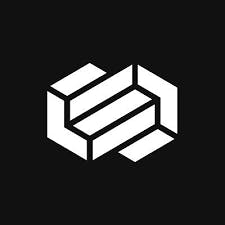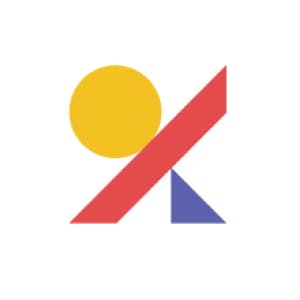Alex Lee, CEO of Truewind, on the potential of GPT-powered bookkeeping
 Walter Chen
Walter Chen

Background
Alex Lee is the co-founder and CEO of Truewind. We talked to Alex to learn more about the messy SMB finance data layer undergirding tech-enabled bookkeepers like Pilot, the potential for AI to transform accounting, and how founders are thinking about building tech-enabled services businesses in 2023.
Questions
- Let’s start off with a history of the space. inDinero was founded in 2009, then Bench in 2012, and Pilot in 2016. I’d love to hear how you describe the history of software-enabled bookkeeping services, what has worked, and where you see opportunities in the future.
- You're saying there's this vision of fully automated bookkeeping that brings in all the connectors and then automates it. Can you describe your on-the-ground perspective on the promise of that, connecting everything and having it automated, versus the reality, and what the difference is?
- How does it work on the underlying data layer for financial transactions as far as reconciling data from different systems given the unreliable quality of the underlying data?
- You mentioned there's a science and an art to doing books. Is the art captured in any of these systems today? Or is it that it's already captured, and it's about interpreting it and understanding it? How do you think about that piece?
- Can you talk with some specificity about how some of these companies work? Pilot is built on top of QuickBooks, whereas Bench has a proprietary software stack, how do you see the relative advantages of each approach? And how are you thinking about positioning that for your company, Truewind?
- QuickBooks has become ubiquitous, but when building on it, it makes your books more portable and reduces switching costs between bookkeeping providers. Can you talk a little bit more about the central role that QuickBooks plays, how it's won the segment, and what it might take to dislodge it?
- Your company, Truewind, and companies like Digits, and Zeni, all promise some form of AI-powered bookkeeping. Can you talk about what those areas are at a high level that can generate 10X leverage and either bookkeeping productivity, customer experience, or something else? We've touched a little bit on the classifying expenses, but I’m excited to hear how you see that?
- When we talk about generative AI specifically, a lot of people think of sales and marketing, they think of companies like Jasper and Copy.ai. When we’re talking about some of these applications, are we talking specifically about generative AI or more generally about AI? How would you think about that or classify the different types of AI that we're applying? And then, in a more abstracted way, how do we think about the application of that AI to the finance back office?
- When it comes to using AI, ow do you think about designing for correctness and truth in bookkeeping versus efficiency?
- Could you just share a little bit about what your AI stack looks like? What are the key components, key services or technologies you use? And maybe a hint as to how an AI-powered bookkeeping service fundamentally looks different from an existing bookkeeping service that might tack on some AI features?
- Do you see AI as something that can help transform the customer experience of working with a bookkeeper, or is the telephone something you still can't really compete with?
- Speaking of this 100X productivity, what does the margin profile look like for this previous generation, software-enabled bookkeeping services? And what do you think is achievable with AI? Also, how do you think about margin in general at Truewind?
- Is there an opportunity to change the business model and drive a much higher velocity of customer acquisition in bookkeeping by taking something expensive and purely service-based and applying technology the way we've seen with R&D tax credit services?
- Are there any particular software-enabled services businesses that inspire you and that there's aspects that you're borrowing? And then, this high level question of if everything goes right for Truewind in the next five years, what does it look like? How is the world different?
- You've expressed a different vision from the idea of expanding TAM by layering on more services. You want to build more software. You talked about what sounded more like, let's say FP&A software, can you build out what that vision looks like?
Interview
Let’s start off with a history of the space. inDinero was founded in 2009, then Bench in 2012, and Pilot in 2016. I’d love to hear how you describe the history of software-enabled bookkeeping services, what has worked, and where you see opportunities in the future.
We've been trying to—for lack of a better word—‘automate’ bookkeeping since the dawn of JavaScript. So many companies have come and gone trying it. On some high level, it does seem to make sense: Accounting is a set of rules, right? If software is good at following rules, we should just be able to automate all that.
As we went along, we learned that software is not just a set of rules, it's a set of guidelines. It's not just a set of numbers; it requires business context. I think that's why this holy grail of fully automated bookkeeping hasn't been realized yet.
In many respects, that's okay. I don't believe we can fully remove human out of the loop. It's just a question of how we can use the technologies we have to remove more and more of the manual, tedious tasks—to the point where, instead of one bookkeeper handling five, 10, or whatever number of clients, one bookkeeper can do 50, or one controller can do 100. They're just really coming in and just looking at a couple things.
The dawn of JavaScript and automating repetitive tasks came first, and there were many things that it couldn't handle. But then we started having APIs for everything, open APIs, we can just go in and grab the data that we need, and that's where Bench and Pilot were really coming up. Now, the exciting thing is we're at a new inflection point with AI and the technologies that GPT-3 brings to us, so I think there's a lot more tasks that are being automated going forward.
You're saying there's this vision of fully automated bookkeeping that brings in all the connectors and then automates it. Can you describe your on-the-ground perspective on the promise of that, connecting everything and having it automated, versus the reality, and what the difference is?
The promise sounds really good. If accounting is a set of events that happen in your business, well, all those events are captured in the production systems that we use. So we had to wait until there were enough production systems to capture all that. We have all our payroll in Gusto and Rippling, all our sales activity in Salesforce and HubSpot. We have payments going through Stripe Pay, or whatever it is. It's like broad coverage.
Now, let's just reach our hands in there and grab all the data that we need. It sounds really good on paper, and to some degree it makes sense. Well, if in Stripe you send a subscription, then you should be able to track the monthly revenue that comes in. But let's use an example of a popular SaaS metric, MRR.
You and I might use Stripe in two different ways. You're a sophisticated Stripe user. You will go in, create a subscription, and every single month that invoice gets sent automatically and Stripe will capture that as MRR. I, on the other hand, I'm not a sophisticated Stripe user, I just need to send the invoice. So I go in and every month I manually send an invoice. We both achieve the same thing, as in the invoice goes out and we receive money. But as far as analytics go, in your case it's MRR, for me it’s zero MRR.
From a technical standpoint, what does that all mean? Production systems have what's called normalized schemas. It's a bunch of small tables that capture one particular event. In order to do data analysis, you move your data into a data warehouse and summarize it as a dimensional schema, one larger table summarizing the state of your business. The only way to do that is with an army of data engineers to build the data pipelines, and an army of data analysts to do the analysis, to do the data transformations.
That's why this vision of fully automated financial analysis, fully automated finance, or fully automated anything, is just so hard to realize. Because you need somebody to go in and manipulate the data, because it doesn't come out of the production systems in a perfect way.
How does it work on the underlying data layer for financial transactions as far as reconciling data from different systems given the unreliable quality of the underlying data?
I think it's two-fold.
You touched on one point, which is the quality of data. They go into these systems, and they pull out a table, but the table is not truly representative of the state of the business. That's a quality issue.
The other issue is unstructured data. If you think specifically about bookkeeping, there's a lot of journal entries that happen without cash exchange. When you sign a lease agreement with a building, when a customer signs a multi-year contract with you for sales. At the point of the signature, the invoice, whatever it may be, something happens in your accounting, but nothing happens to your bank account.
Looking at the second piece, it means you read through the contract and then you pull out the information that you need in order to fill out a spreadsheet to get the journal entry that you need. Bookkeepers are constrained on those two fronts. Bit by bit, we chipped away at it.
Before, the bookkeeper would have to call the owner, the CEO, whoever it is, and say, “Hey, could you send me X, Y, Z?” Now, they can log into systems by themselves and pull the data, but then they still have to read the data, and then manually type it over. Bit by bit we're making progress, and there's so many things that pure software can’t do just yet.
You mentioned there's a science and an art to doing books. Is the art captured in any of these systems today? Or is it that it's already captured, and it's about interpreting it and understanding it? How do you think about that piece?
Accounting software companies have tried to capture the context through rules. Let's say you swipe your credit card on something called Slack, and then the memo says a bunch of words and numbers, and the word Slack in there. We both know what that is. But if you send an ACH wire to John Matthews, I don't know who John Matthews is, you do. You tell me it's your marketing contractor. Going forward, I will note that's your marketing contractor, but not all the context.
Companies have continually tried to do it by letting you save rules. If a transaction that comes in as Gusto, it is going to be saved as payroll, Slack is saved as software, John Matthews, it'll be saved as a marketing contractor, which, in theory should work. And yet, anyone who uses QuickBooks will all agree that the rules feature is at best 50% accurate.
Even with Gusto, one transaction is $4,000 and it says Gusto, you know that's payroll, but another transaction is $40 and it says it's Gusto, that's not payroll, that's a software tool that you pay for. So little nuances like that.
In terms of the business context piece, I think this is where the holy grail ultimately comes in. You know how there are some of those knowledge management AI companies, where they want to take all your meeting notes, or take all the activities that happen for a week, and generate a weekly PowerPoint for your all-hands meeting?
I think the holy grail of accounting ultimately comes from capturing all the other context that happens. Now, I also hesitate with saying that because you're going to end up capturing like 97% of things that don't matter.
This is a complicated problem.
I was talking with a CRO who was trying to win a really big sales contract, and he started getting really, really creative with his contract, which would make a very meaningful impact on how we track ARR, but also how we measure things for accounting. These are the nuances that rules-based software just can't do. And even with AI today, I wouldn't feel entirely comfortable with it. But just seeing how fast AI is growing, I think that's where we need to start looking ahead and think, ‘all right, we may not be able to capture it with 99% confidence today, but maybe in one to two years, the tech will be there.’ And these are the types of contexts that we can start capturing and making the bookkeepers' lives easier.
Can you talk with some specificity about how some of these companies work? Pilot is built on top of QuickBooks, whereas Bench has a proprietary software stack, how do you see the relative advantages of each approach? And how are you thinking about positioning that for your company, Truewind?
First of all, I will say anyone who's building accounting software probably daydreams about building a brand new QuickBooks, a brand new general ledger that’s designed for the customer segment that they're building for. My opinion of this is rebuilding QuickBooks is a high effort, low value project, because your customer doesn't see the backend of QuickBooks. They don't really care.
When I look at QuickBooks, I see a Ferrari engine that's underneath the hood, but no one can see the engine. All they see is the exterior. And the exterior is—pick whatever crappy car you have from the 1970s. The user experience isn't great by any stretch of the imagination. They've done a great job with go-to-market, and I think that's how they really want it.
That's how I view building on top of QuickBooks versus not—you might as well build on top of it because they have this Ferrari engine, and you can just focus on building the customer experience that the customer wants and deserves.
In terms of how we're thinking about it, that's our going in position, we're going to build on top of QuickBooks. But looking forward a little bit, there's this company in the healthcare CRM space called Viva. I think they're a $20-$30 billion company.
They’re a healthcare CRM built completely on top of Salesforce, and that allowed them to grow into a decacorn. I think it was only in the past year or so that Salesforce decided they wanted to go after the healthcare space, themselves, so the partnership between Viva and Salesforce has been severed.
But in some ways you think, “Well, that sounds like a lot of pain for Viva.” Yes, it is, but it also allowed them to grow to $26 billion, and now they have all the resources they need to rebuild it from the ground up. Yes, it's tech debt, but I think it's more important to move fast than to try to rebuild a brand new accounting system when there's already a good one you can build off of.
QuickBooks has become ubiquitous, but when building on it, it makes your books more portable and reduces switching costs between bookkeeping providers. Can you talk a little bit more about the central role that QuickBooks plays, how it's won the segment, and what it might take to dislodge it?
I was catching up with the guy I met recently at Intuit, and I was asking him “How'd you guys win? How did QuickBooks win?”
His view internally was they had a very robust product that did all the things that it needed to do. I think that's fair to say. It's not a fantastic design, but it has all the features you need it to have.
They also have this army of boots-on-the-ground salespeople that gets this into the hands of small business owners. I think that's where it started. I think it started off with small business owners and then went to accountants. It's always a little bit harder, in my opinion, selling to accounting firms and legal firms is a little bit more challenging. You get into the hands of the company, and then the bookkeepers will learn to adopt it as well.
One thing that Intuit has done really well in terms of QuickBooks continuing to grow, is they capture the audience with bookkeeping, and that's a small ACV to start, but one of their biggest selling points is their net dollar retention, even despite the fact that so many businesses die, is very, very high, I think it might be over 100%.
Because you started with bookkeeping, and then you're going to go into invoicing, expense management, payroll, hourly, and so on. There's a ton of features that they've built on top of it, and while many in tech startup land like to use the best in class of each category, small businesses don't. They just want to use one.
Bookkeeping is a starting point, and bookkeeping and QuickBooks might provide their banking, then they're going to use it for everything. I think that's how they've done well and won.
In terms of how you might be able to dislodge a QuickBooks, in SMBs, I'm not sure. I haven't thought too much about that because my focus is on venture backed startups specifically. And so as far as VC-backed startups, it's about creating the 10X better user experience. Let QuickBooks sit in the background, our users don't interact with it, they interact with something far more delightful and nicer, which is our interface.
Your company, Truewind, and companies like Digits, and Zeni, all promise some form of AI-powered bookkeeping. Can you talk about what those areas are at a high level that can generate 10X leverage and either bookkeeping productivity, customer experience, or something else? We've touched a little bit on the classifying expenses, but I’m excited to hear how you see that?
Yeah, I'll touch on both, on the bookkeeping productivity and the customer experience.
On bookkeeping productivity, a very common task required of bookkeepers is to read an invoice, read a contract, figure out which data came in, and if an accrual expense needs to be written. So very specifically, let's say I used a vendor from January 1 to January 31, and then I received an invoice on January 31. Everything is squared, my expense happened this month. I got the invoice this month, we debit expense, credit accounts payable, we're done.
But what if your service period was for January, but then you received the invoice on February 3? Well, then the invoice received on February 3 creates a journal entry automatically, but then it was actually for the previous month. So you need to reverse this journal entry and then write a new journal entry for the previous month. Then, what if, because this happens all the time, you get service for 31 days and the vendor never sends you an invoice? But you know you used a service, so an invoice is coming at some point. You’ve got to mentally remember that and maybe put in a number that you think will be your expense, and when you receive the invoice later, you'll then adjust it.
These are all manual tasks that need to happen. Right now the first task is to read the invoice that is received and then go do it. Now, before AI, we couldn't do that programmatically. Now we can, whether it's with Google OCR or with AWS, I think it's called Tesseract. Now, we can read those invoices and contracts with AI and make a recommendation for what it is. Then all the bookkeeper has to do is verify it or make simple changes to it. That's a 10X improvement in their productivity from just a contract reading standpoint.
From a user experience lens, the most common exchange from the operator to the bookkeeper is the bookkeeper sending an email at the end of every month. You can just imagine the dread on the operator's face, ‘oh, man, I got to do this again.’ So I'll wait, I'll wait, I'll wait until it's 31 days into it. You're already in the next month, you haven't finished closing out the books yet. So let's think, is there a way to abstract the experience to something more real time? I think about receipts and expense management. Before or after a trip, you had to hold onto all your receipts and do it manually into SAP. Now with Ramp, or Brex, or Expensify, you take a photo of your receipt at the moment, you throw away the receipt, and you're done.
Can we replicate that type of experience with bookkeeping? I think we can. Something like, I don't want to send you a text every day, Walter, saying, "I don't know what this transaction is." But maybe once a week I send you a text. "Hey, these transactions, we recognize. These, we don't, can you tell us a bit about them?" And you just text me back in plain English. Now we can recognize what the context means and categorize it correctly. I see that as also a 10X improvement in the customer experience.
When we talk about generative AI specifically, a lot of people think of sales and marketing, they think of companies like Jasper and Copy.ai. When we’re talking about some of these applications, are we talking specifically about generative AI or more generally about AI? How would you think about that or classify the different types of AI that we're applying? And then, in a more abstracted way, how do we think about the application of that AI to the finance back office?
Everything I described, I would say more strictly falls in the AI categories, more predictive. But because generative AI is all the hype these days, you hear it get tossed around a lot. And there are very tangible, real ways to apply generative AI to finance and accounting. Let me list out just a few. On the bookkeeping or routine task front, as AI helps with data entry reconciliation, it can learn from past transactions, and you can start generating rules and processes to reduce the need for human intervention. That's how I can see generative AI playing a role in the accounting portion.
Let's take it a step further into financial modeling. I think this is the holy grail that many financial analysts imagine.
Rather than build out the logic in Excel, we type out the logic that we want to describe and then generative AI builds the financial model. By analyzing historical data, it could generate predictions for future financial performance. Now, let's go beyond just a financial back office, but more broadly in the finance world, to fraud detection.
Generative AI can help identify patterns of fraud by analyzing large amounts of financial data and generating new insights to help identify transactions that deviate a little far from the norm. Those are very tangible ways of how generative AI, I think, is leaps and bounds better than what we currently have in the finance industry.
When it comes to using AI, ow do you think about designing for correctness and truth in bookkeeping versus efficiency?
When we look at all the generative AI activity, there's an expectation that it’s not 100%. Even just the other day I was using ChatGPT to search for some examples of companies working with generative AI, and it gave me a bunch of different examples. I tried to search for it on Google and I couldn't find the source. Then I asked ChatGPT, ‘could you provide the source of that?’ And then it said ‘my apologies, I made a mistake,’ and it gave me some new examples.
I will say that’s probably one of the biggest technological risks and one that’s more like a company ethos. We strive to bring efficiency, but recognize at the end of the day, accuracy is the number one priority. Like many of our other friends in the software AI-powered accounting and finance space, there are people involved, and we certainly have people involved, human in the loop, to make sure everything is correct.
Now, that said, there’s another angle to this, which is around design. How do we design our product and the user experience in a way to just increase the transparency of what our customer sees? I think that goes a long way in terms of creating trust, letting them see things themselves and letting them verify if things are correct or not. The text message I described to you where we tell them "Hey, we don't recognize certain transactions.’"
Right above it is "We categorized 25 different transactions, click here to see more." And you can click in, it'll take you to our application, and you'll be able to see your transactions, and what it was categorized as. And it's a very simple click to tell us that it was incorrect, and it'll prompt us to look at it again. I think it's a combination of company ethos and how you operate in making sure you prioritize accuracy no matter what. Then, number two, how do we design the product? How can we be creative and design it in a way to get the user more involved to verify things are correct?
Could you just share a little bit about what your AI stack looks like? What are the key components, key services or technologies you use? And maybe a hint as to how an AI-powered bookkeeping service fundamentally looks different from an existing bookkeeping service that might tack on some AI features?
Every single time I say AI-powered bookkeeping, I do gloss over it, because you could have one neural net do a little bit of predictive work on the next transaction that comes in and call it AI. You can say rules-based tagging is just a single line neural net, and that's not all that interesting to me because it still misses out on so much of the business context. It always comes down to business context. Accounting is not just a set of numbers, it requires business context.
When I think about AI-powered bookkeeping, maybe this is more detailed than you'd want to get into, I would ask whoever it is that you're talking to, "What exactly are you doing? Walk me through the use case."
That's what all my customers, every sales call, every customer that signs up, wants to know: "What is it that you're doing? Walk me through the steps and the user experience that I would have."
That's why throughout this call, I try to be very specific about "Well, this is the workflow, and this is how AI solves it."
Now, as for your question about what our AI stack looks like, I think of that meme with a normal distribution chart, and then the person on the far right and the far left say the same thing, and the person in the middle tries to over-complicate it too much.
We have this great gem with OpenAI, and the work they're doing in GPT-3. And as a YC company, they provide us a lot of support, so we leverage them heavily. There are also a lot of other ML ops platform companies in our batch as well as LLM infrastructure companies that we leverage. So as you said, as a way, again, for us to move fast, we work with some of these other startups to help build our backend AI function, but now we rely heavily on GPT-3.
Do you see AI as something that can help transform the customer experience of working with a bookkeeper, or is the telephone something you still can't really compete with?
I think it depends on how our users ultimately evolve. So to your point, local mom and pop stores and SMBs, they're going to want to know who their bookkeeper is, because the bookkeepers are touching something that is very, very near and dear to their heart, their money.
You go to a venture-backed startup, they care a little bit, I'd say they care a lot less. They're happy working with a Pilot, or a Zeni, Truewind, any of us without a particular individual or face at a company because they trust technology, they trust product, etc. And the question becomes, ‘will the local, small mom and pop business follow in that way, where they become okay with not knowing who their bookkeeper is?’ I don't know the answer to that question. When I think about Truewind, we want to be prepared for both.
We offer this whole package like many other companies do. But let's say they want to continue working with their local bookkeeper. That's also okay with us because, at the end of the day, our vision is to build software that bookkeepers, accountants, and finance professionals can use.
When I think about where we want to go, we want to start off at the foundation of accounting and finance, which is the journal entry. We start there, we capture a journal entry, then get into accounting, and financial statements, and then the controller work, financial analysis, financial modeling, M&A, corp dev, the entire finance stack.
For us, it's about, ‘how do we keep building out that finance stack?’ So we give tools to the people who ultimately want to use it. Many of our customers don't want to deal with another bookkeeper, great, let us be that. And our software makes us 100X more efficient. But if you want to keep using a bookkeeper, that's okay, too. You can also use our software, priced a little bit differently, because it'll make your bookkeeper 100X more efficient and also happier.
Speaking of this 100X productivity, what does the margin profile look like for this previous generation, software-enabled bookkeeping services? And what do you think is achievable with AI? Also, how do you think about margin in general at Truewind?
I saw a tweet from a YC group partner, Jared, who said, "For the first time in a while, the biggest risk for this batch of companies is not market risk, which is whether or not the customer wants it, it's technology risk. How viable is this new piece of technology?"
I think we've all seen enough promise from ChatGPT product ties that GPT-3, GPT-4, and whatever comes afterwards has a lot of legs and has a lot of ways to disrupt the way we currently do things. People talk about differentiation on this, how, like, "Oh, the models would be commoditized. It comes down to data."
I think there's some truth to that, in terms of data providing accuracy, but then the bigger differentiation is who's more creative? Given this new piece of tech, who can create a new creative product, a new creative workflow, a new creative business model to stand out for the rest?
This is a long-winded way of coming around and saying, when I think about the business we want to build, we want to build a software business. Will there be human in the loop? To some degree, absolutely. Whether they want us as the controller or they want an outside controller, ideally an outside controller.
I see our business model evolving as our customers mature. At the earliest stages, they will use us for their bookkeeping, perhaps, but then as they grow and they hire an in-house bookkeeper, and they hire an in-house finance person, they will continue using our software.
It's not our objective to stay a tech-enabled services firm, in which case, I think we might get to, I don't know, services companies get to 50%, 40% gross margins, and then 10% net margins, maybe. Our goal is to get to 70 plus percent in gross margins and to 20-30 plus percent in net, because we believe with AI, there's so many of the customer success tasks that you previously needed people to do, that could be offloaded to a piece of technology.
Is there an opportunity to change the business model and drive a much higher velocity of customer acquisition in bookkeeping by taking something expensive and purely service-based and applying technology the way we've seen with R&D tax credit services?
I think there's an opportunity to dramatically flip it on its head, and it's a major focus of ours. Again, we think about the ways that technology—with JavaScript, with APIs, now with AI—the biggest benefit that we have with AI, with APIs, is you can capture all the, call it semi-structured data, and do a bunch of data engineering and data analysis to transform it. But then you're missing out on all this unstructured data, which I think is really the last piece of the puzzle, here. Think about if we can leverage artificial intelligence to capture contracts, invoices in different formats, a short paragraph from the CEO, capturing all that business context, and then translating that information into accounting. Now, first of all, let's consider a two, three person company versus a 100 person company, the 100 person company is more complex. Let's shelve that.
But a two, three person company started thinking, ‘what am I missing? What else is there? That's it. I have it all.’ So why can’t I offer a five dollar or free bookkeeping solution for very small companies with a limited number of transactions, where maybe we don't need to have anyone touching it at all? I think that is very, very achievable with this new piece of technology, and it's something that's very top of mind for us, because if not, then what are we doing here? It's a competitive space. We're all just competing margins down, because financial statements are, put indelicately, a commodity. It's either right or wrong. There's no better financial statement. We can use technology to create a better experience, but so often our users just want the best price. And so with this new piece of tech, whoever is using it right, and I believe we really are, we could have real pricing power in those early days, to be able to capture those companies, where it still doesn't hurt our own pockets. I think we'd be able to flip the go-to-market and business model on its head from where it currently is at.
Are there any particular software-enabled services businesses that inspire you and that there's aspects that you're borrowing? And then, this high level question of if everything goes right for Truewind in the next five years, what does it look like? How is the world different?
The two companies as well as two founders that inspire me in terms of what I'm doing, but also as a founder myself, would be Carta and Pulley, obviously competitors to each other in the cap table space. I admire the way that Henry at Carta went into a traditional services industry and brought technology into it, and had a very smart and creative go-to-market motion to move really fast and grow really fast, grow with the customers, but also get customers to refer more. In a similar-ish way, I have a lot of respect for Yin Wu at Pulley, and how she went into a space with a category leader in Carta, and has managed to carve out a very strong position for herself, and Pulley continues to grow a lot. In terms of software-enabled services, but also them as leaders, I have a ton of respect for them, and draw a lot of inspiration from them. Because in terms of their product development and their go-to-market motions, there's a lot of things I can learn from them.
Now, in terms of what Truewind looks like in five years, if everything goes right in this area, I also drew inspiration from Carta and how they want to build the financial infrastructure for the private markets. And for them it's capturing the atomic information. The atomic level of information they're capturing is equity ownership. I share that same passion and excitement for what the private markets would look like if we had more robust financial infrastructure. For us, the atomic unit we want to capture is the dollar amount, the journal entry, your finances.
Because if you look at the financial infrastructure for the public markets and what is done for companies in the public markets, but also for individuals, retail investors, and for the economy, it's been phenomenal. It's been great. But I think any of us in startup land will agree that more startups is a good thing for our society, more startups is a good thing for our economy. And what's missing in the private markets is this robust financial infrastructure to allow more capital to flow around. It could be equity, it could be debt, for more transparency, for more information. And we want to be the key player in the financial data infrastructure portion. So that's what I envision Truewind looks like in five years, when everything goes right.
You've expressed a different vision from the idea of expanding TAM by layering on more services. You want to build more software. You talked about what sounded more like, let's say FP&A software, can you build out what that vision looks like?
I don't know what Pilot was like when they first started. I think they started something like seven plus years ago. I understood their original thesis that all these production systems have APIs, so we’ll reach in and grab the data we need to automate bookkeeping. And the natural next progression is to grow with your customers and fulfill all their finance back office needs. They need bookkeeping, they need taxes, they need financial analysis and planning, they need audits, etc. So bit by bit, you grow those out. I love the mindset, and we follow it, follow the money, what your customers needs, you grow with them, but they were limited by what technology could do. Could technology automatically build a fully fleshed financial model at the time with the software that we had? No, it couldn't.
The reason why I had the mindset of building out new software products, I think is because for the first time ever, we believe we can. I was having a conversation with a batchmate who was saying customer support people have been told, ‘use our AI, we will automate customer support by 90%.’ And they've been saying that for seven years, and it only does 20-30%. So those people are probably sick and tired of hearing about it. Whereas with finance, there's not that many vendors out there saying, ‘we'll do things with AI,’ because for the longest time we just didn't believe that we could. Not only did we not believe it, we couldn't. But now we can. Now, I believe we're not far away from writing a prompt and it generates a full financial model.
In fact, I heard about it on the All In Podcast. David Sacks was talking about how he saw a startup that could do something like that. When I think about what GPT-3, GPT-4, and the wave of AI that's to come out, what it can do, on one hand, is automate, or it could replace any low level intelligent job. Put another way, any junior level analyst work that was done before, we're not far away from the technology to be able to do that. And that's kind of the mindset that we have. Hence the reason why I can be in a position to say we're going to build more software products to service the needs of our customers as they grow, because we have the technology to be able to do it. For us, it's a matter of we need to understand our user, and let's be creative, and build the right user experience, and do it all.
Disclaimers
This transcript is for information purposes only and does not constitute advice of any type or trade recommendation and should not form the basis of any investment decision. Sacra accepts no liability for the transcript or for any errors, omissions or inaccuracies in respect of it. The views of the experts expressed in the transcript are those of the experts and they are not endorsed by, nor do they represent the opinion of Sacra. Sacra reserves all copyright, intellectual property rights in the transcript. Any modification, copying, displaying, distributing, transmitting, publishing, licensing, creating derivative works from, or selling any transcript is strictly prohibited.













